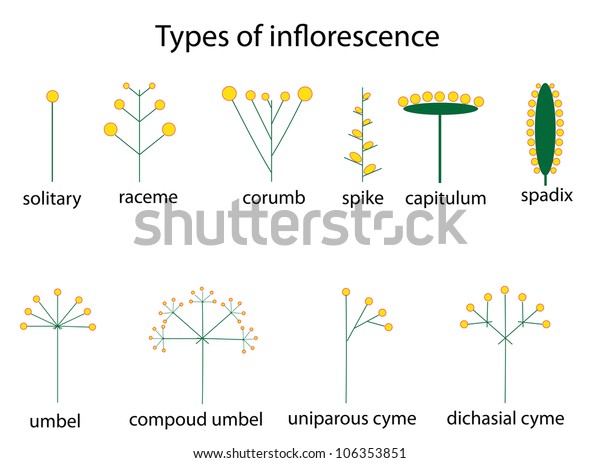
Unlike traditional flowers like a rose, marry gold, or even lotus, these flowers quite different in their appearance and arrangement. It looks similar to umbel type inflorescence, but the difference between the two is that terminal flower matures or opens first. Examples of dichasial cyme include saponaria, jasmine, teal ixora and so on. The different types of the cymose inflorescence are as follows – monochasial cyme, dichasial cyme, multiparous cyme and cymose head. In uniparous cyme the ‘’ bracts’’ when present, are formed on the side opposite the origin of flowers. 0 Browse other sentences examples → The flowers can be restricted to one side only as in helicoids uniparous cyme. Some examples of Cymose inflorescences are shown here. Examples of racemes occur on mustard (genus Brassica) and radish (genus Raphanus) plants. Inflorescence composed of flowers with pedicels borne on the ends of the central peduncle and its lateral branches. – when branches grow alternatively on both sides, it is known as monochasial scorpioid cyme. It is the type of inflorescence where growth of the main stem stops after the growth of a flower. Example: Papaver-Terminal solitary cyme, and Hibiscus-Axillary solitary cyme. Tall Flat-top White Aster, Doellingeria umbellata Arrangement of flowers are in acropetal order. The flowers are arranged in a basipetal sequence, which means that flowers start maturing from apex or the top and towards the base of its stem. This example is from Wikipedia and may be … Flowers are the most beautiful parts of plants. The growth of flowers is terminal and one-sided. Each flower is borne on a short stalk, called a pedicel. A cyme developing along only one axis may be a elicoid cyme (bostryx), scorpioid cyme (cincinnus), rhipidium or drepanium. Capitulum (dandelion) is a flattened raceme found in many plants of the Aster family. Common types of inflorescences among the angiosperms. Or in another sense, Solitary flower is an inflorescence made up of only 1 flower.

The complete terminology is: "inflorescence with solitary flower". Multiple branches arise at the base of the apical flower on the peduncle. Biparous or Dichasial Cyme – In this type of inflorescence, the main stem stops growing after the development of a terminal flower. Monochasial Cyme (uniparous): The main axis ends with a flower. Helicoid Cyme(or bostryx) - a determinate cyme in which the branches develop only on 1 side, due to the abortion of opposing paired bud, the inflorescence thus appearing simple. The inflorescence axis finishes in a flower. In cymose inflorescence, the peduncle or the main stem shows a sympodial or multipodial growth while in the case of racemose inflorescence, it shows a monopodial growth.

Difference Between Racemose Inflorescence and Cymose Inflorescence, Vedantu This is also called simple polychasium. Flower heads in an open corymb, with ~ 15 white rays & a yellow or red disk, per Wildflowers of the Southern Mountains. The inflorescence is a modified form of a flower but looks like a bunch of flowers. The flowers closest to the peduncle form first. There are two types of monochasial cyme: Scorpioid type in which the lateral branches of the axis bearing a terminal flower alternate as in Rananculus bulbosus. The first two are monochasial (one flower at each node) in the form of scorpioid cymes. An inflorescence is a group or cluster of flowers arranged on a stem that is composed of a main branch or a complicated arrangement of branches.
.svg/240px-Dichasium_(inflorescence).svg.png)
Example: terminal in Trillium grandiflorum and axillary in Hibiscus. In angiosperms, flowers are arranged in a specific order in each plant. The actual arrangement is basipetal which is clearly visible in biparous and multiparous cymes. Specialized terminology can be applied depending on the type of cyme.


 0 kommentar(er)
0 kommentar(er)
